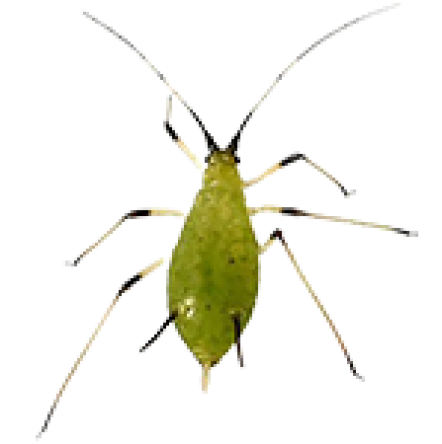

Aphid
Aphids are species of the family Aphidina, which in turn belong to the systematic group of plant suckers (Sternorrhyncha). Aphids have a characteristic, commonly known body shape. Winged and unwinged forms occur side by side. Aphids generally grow between 1 and 3 mm in length. Coloration is species-specific, often aphids are yellow-green or brown in color.
Behaviour:
Aphids occur on very many crops. In part, the occurrence is dependent on the presence of certain host plants for certain developmental stages. Eggs are laid on certain perennial plants.
Damage/illnesses:
Due to the mass appearance aphids can be very unaesthetic. Plants are damaged by sucking plant sap, but more by the possible spread of plant diseases. The sugary plant sap (honeydew) secreted by aphids coats the plants. Microorganisms can settle on it, which can again damage the infested plant.
Control:
Aphids can be caught by small sticky traps. It is important to apply the sticky traps at an early stage as a preventive measure, as this application can only control the flying stages. In individual cases, it also helps to remove aphids by stripping them from plants. A home remedy is spraying plants with nettle decoction. The decoction must be freshly made, otherwise it has no effect.
Prophylaxis:
Use Neocid Expert Yellow Trap for infestation detection.




